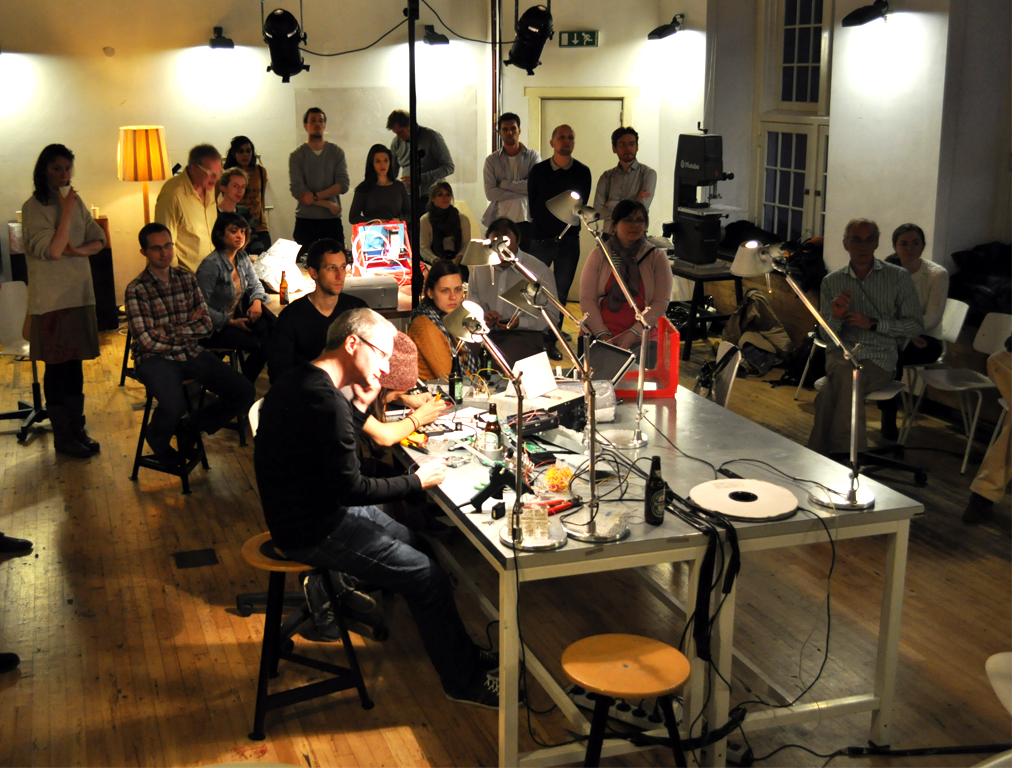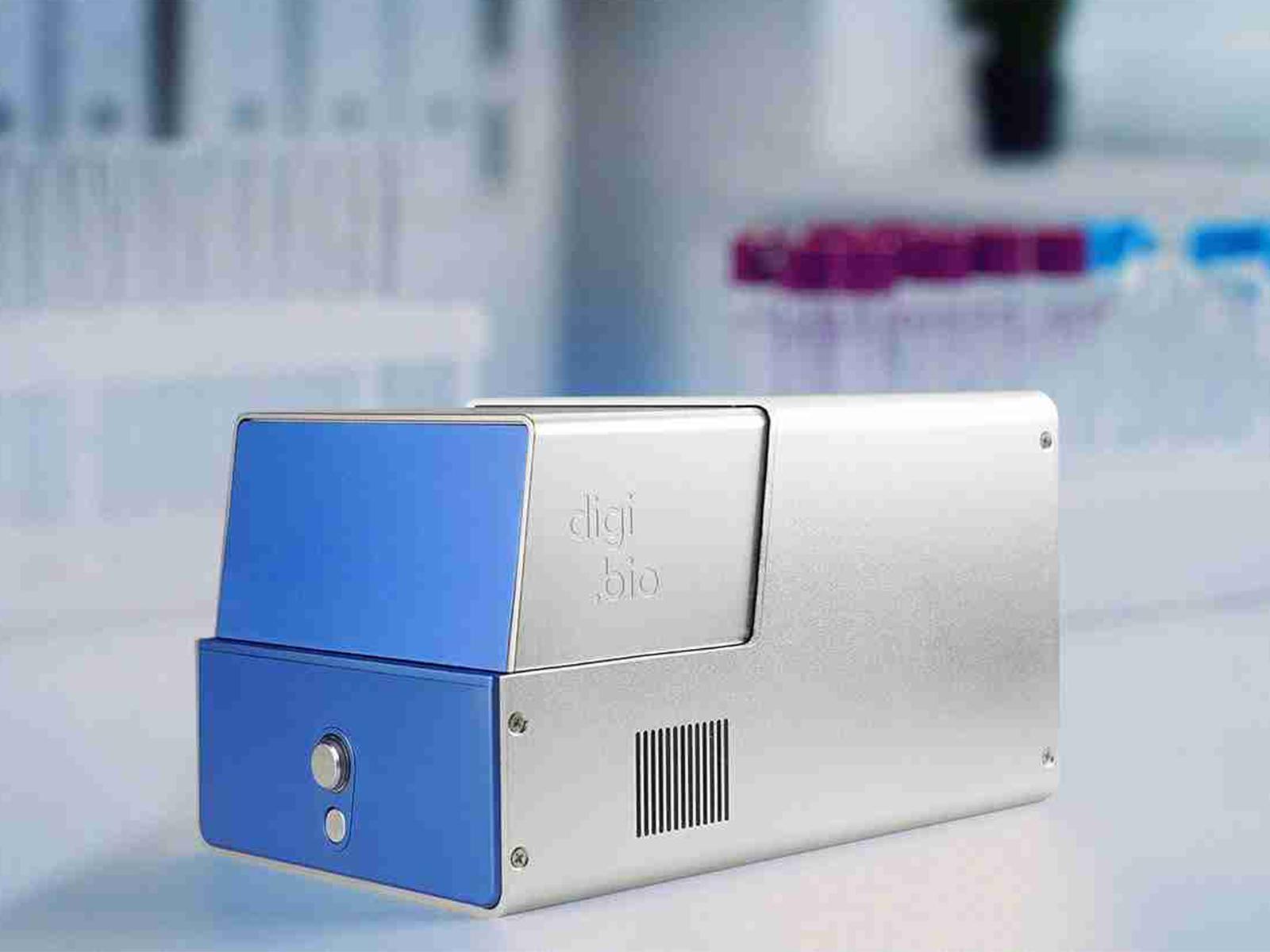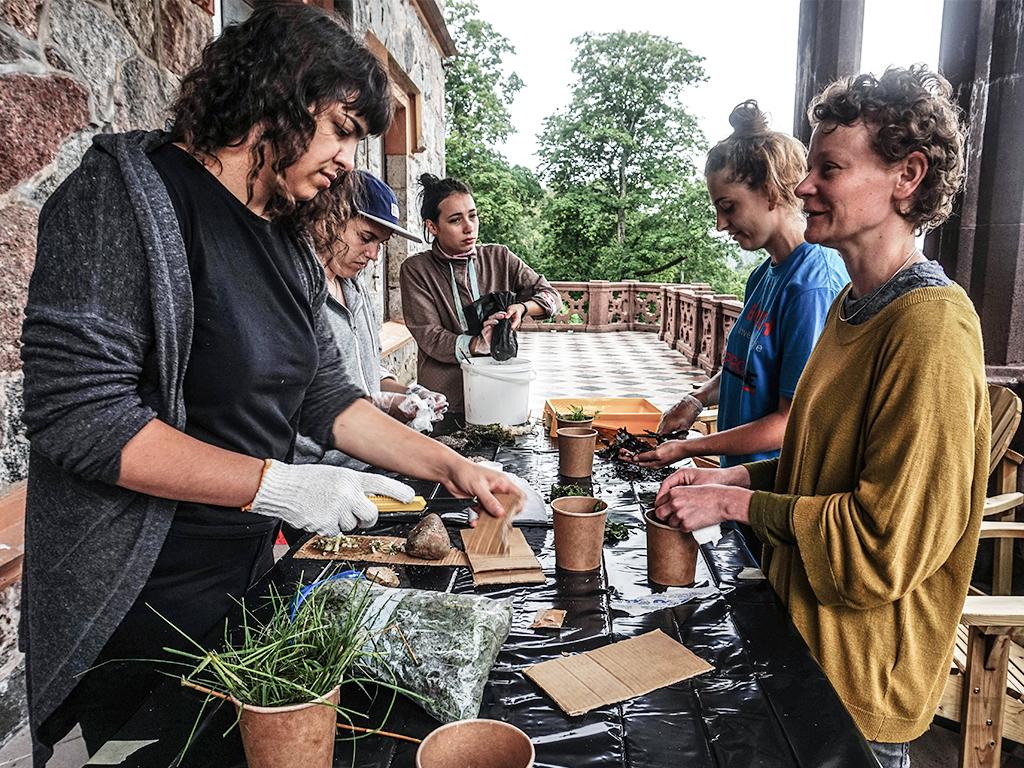At Do it Together Bio #4 on 3 April 2013 we worked with Aliibrio ficheri, bacteria that are bioluminescence, made 3D prints with living material and we built a bioprinter from old HP printers after the model by BioCurious at Instructables. During the workshop, artist Allison Kudla told about her work and Branislav Misovic and Jelle Boomstra shared their experiences with 3D printing of living materials.
About our guests:
Allison Kudla told about her recent work, printed with living material. This requires some specialized inside knowledge. Like: what is the life cycle of this material? What is needed to grow a living organism? How do these cells function? How to feed them? Amazement and curiosity seem to mark her way of working. She states that only by really understanding the material she works with, a dialogue can emerge, a necessity for an interesting artwork in her opinion.
Jelle Boomstra, lab manager at Protospace explains how a 3D printer can be used to print living material. How can one repair damaged bones, for example? At Protospace, he works with scientists from University Utrecht on experiments to answer this. He shows slides how damaged bones are scanned, how a 3D model is made and how a print is used to fill the bone with new material. This exists of thermoplast and three different layers of gel with cells in it. And this is just the simple version of a rather complicated story. The Ultimaker (a DIY printer) is used by him for research and development purposes. The real printwork is done with a printer that has a lot more quality to offer. Beta TCP, 'a magical powder', can be used to produce the bone. It encourages stem cells to produce them. The stem cells are then included in PLA (a kind of plastic). When the PLA decays, the bone will grow further by itself.
The possibilities are limited for now, but these limitations will be taken away in the future. You can think of (spare) parts for humans or animals, like knees, implants, skin or other parts of the body to be printed.
Branislav Misovic is bio informatician and works at the Leiden University Medical Centre. He is interested in the medical appliances of 3D printing. And especially the printing of living organs. But before this can be realized, a network of veins has to be printed that will nourish the organ. Jordan Miller and a team from MIT and the University of Pennsylvania are working on this. He is doing experiments with a RepRap (open source 3D-printer). Branco Misovic has contacted Jordan Miller and has now started comparable experiments. Branco will be a regular guest at Waag’s Wetlab and we will certainly keep an eye on the latest developments.


